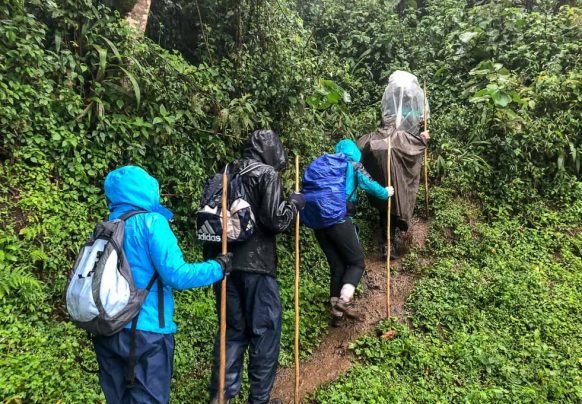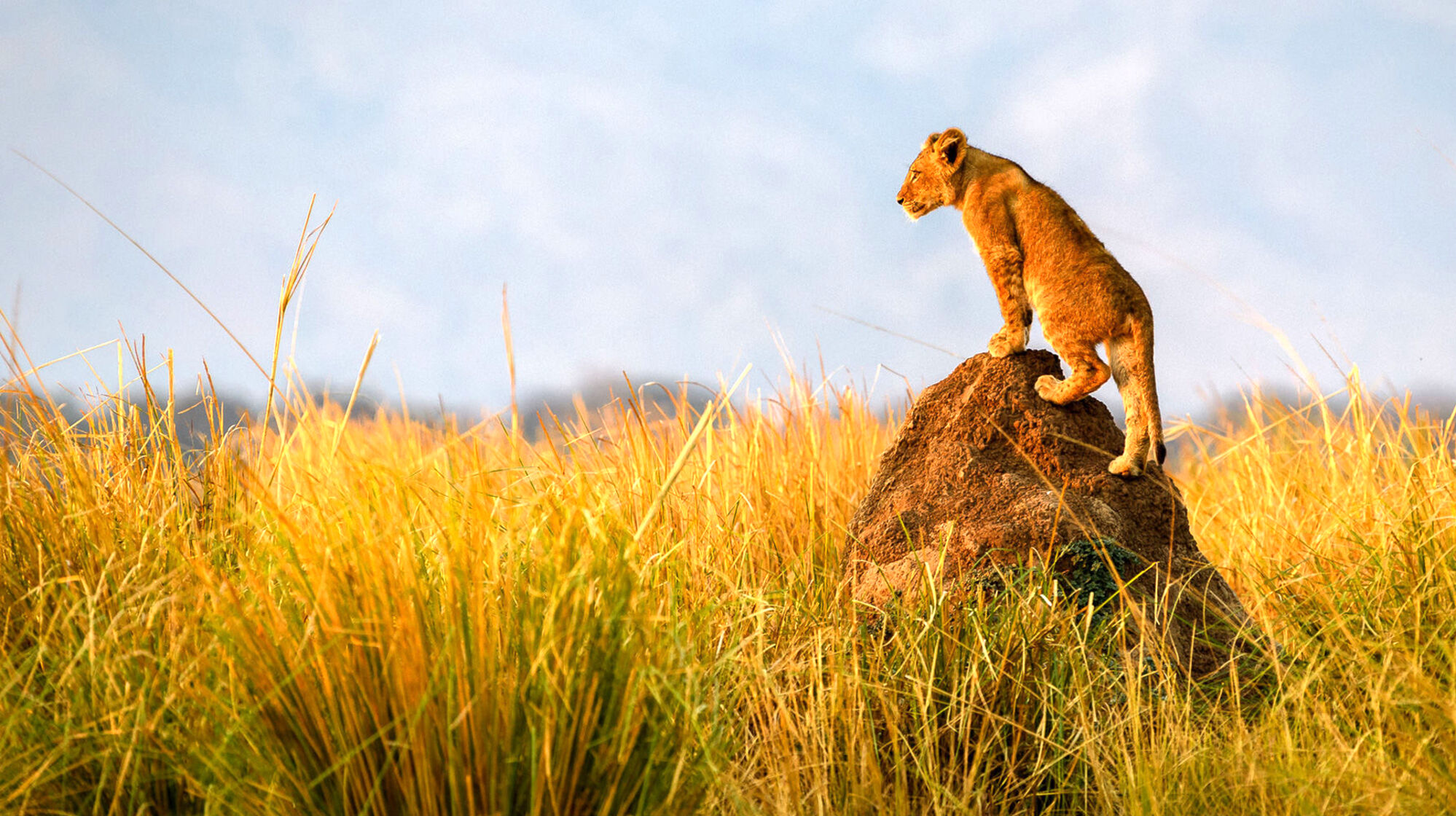What is the Best Time to Visit Uganda?
Best time to visit Uganda- When is the best time to visit Uganda for wildlife safaris, gorilla trekking- when is the best time to go hiking in Uganda? Explore Uganda the Pearl of Africa, a destination with endless opportunities right from bucketful of adventures to unique cultural experiences making it a distinct destination for everyone- from nature lovers to cultural enthusiasts.
Uganda is an all-year-round destination thanks to its strategic location astride Equator crossing. All year-round, Uganda enjoys favorable weather and climatic conditions making it possible for tourists on Uganda safaris to undertake game safari in its varied savanna parks, gorilla safaris to see mountain gorillas or chimpanzee tracking tour to interact with chimpanzees in the wild, etc.
 The best season of the year to visit Uganda
The best season of the year to visit Uganda
When you think of visiting Uganda, the 2 seasons to put into consideration are- the dry and wet seasons. The 2 dry seasons experienced annually are the best time to visit Uganda the Pearl of Africa for game viewing in Uganda safari parks. That is between June and September and from December to February- when the National Parks and other tourist sites experience less or no rains.
Navigating through the game tracks during the two drier seasons is easier as they remain relatively drier and even visitors interested in gorilla trekking, smooth treks to see mountain gorillas in Bwindi Impenetrable National Park or Mgahinga are enjoyable during this period.
The beauty about Uganda is that it is strategically lying astride the Equator and even during the wet or rainy season, it is possible to go game viewing or primate trek. Yes, it can rain in the course of the day but this will happen for a short time and the primate walk or trek can proceed thereafter.
Rainfall amounts vary depending on the region but on average, most parts of Uganda receive rainfall amount of between 1000 and 2000mm. Temperatures too do vary with a record of an average rise of between 25 and 29 degrees during day then at night a drop in temperatures is recorded at 20 degrees Celsius.
Birding safaris in Uganda are enjoyable during the wetter months of the year- between March and May or October and November. These are also noted to be the best months of the year when there are few visitors and guarantees visitor exploration free of crowds.
This isn’t the case with dry season which is also regarded as the peak season and for primate lovers, you will be required to book your safaris in Uganda early- book a gorilla permit in Uganda in advance or a chimpanzee permit and avoid last minute booking.
Uganda’s Unique Location & Weather Pattern (Temperature)
Uganda enjoys a unique location at the heart of Sub-Saharan Africa within the East African region and lies astride the equator making it pleasantly warm and tropical climate with insignificant seasonal variations, making it good to visit year-round. The country is bordered by Sudan in the north, Kenya in the east, the United Republic of Tanzania in the south, Rwanda in the southwest, and the Democratic Republic of Congo in the west. This land linked position for the good climate which you can visit all year round
Average temperatures in Uganda are around 21.5°C or 71°F, dropping to a minimum of 12°C or 54°F at night time, with altitude also affecting this. Being on the equator, rainfall ranges between 1,000 and 2,000 millimeters each year, but depending on the time of year these can be short bursts that give rise to clearer skies.
Uganda has two variation seasons which makes it the best place to visit all year round; the Dry season and Wet season this makes Uganda an ideal place to visit during your safari in Africa.
What is the Best Time to Visit Uganda? Seasons Month by Month
The Dry seasons from June, July, August-Mid September and December to February are the best month to visit Uganda
During this season, it is a fantastic time for both gorilla trekking and game viewing. The dry ground underfoot makes walking easy and despite being the dry season of the year, trekking in the Bwindi forest can be comfortable due to the altitude providing cooler temperatures.
As Uganda’s climate is tropical it is possible that there will be some rainfall, but these are unlikely to affect your game activities, and gorilla treks will still be undertaken.
Uganda’s equatorial temperatures generally range from 17-28C throughout the year but figures in the mountainous regions and during the evenings may drop to around 13C.
The Dry season means that all 10 National Parks are accessible enabling you to witness everything that this amazing country has to offer. Meaning that the dry season is the peak season, prices will be higher and gorilla permits will need to be booked well in advance like 6 months ago.
However, one of the benefits of Uganda, as opposed to some other African destinations, is that the parks rarely feel busy or overcrowded allowing you intimate wildlife encounters and unforgettable experiences.
Some hotels and lodges near this attraction place may fill up fast during the peak season so booking early secures your space at your preferred accommodation.
Visiting Uganda in the dry season means that wildlife is easier to spot in the game reserves meaning you should have fantastic sightings of elephants, lions, leopard Buffalo and so on.
During this season, all of the country’s National Parks are at their best at this time, so travel to Queen Elizabeth National Park to see four of the big five and then on to Bwindi National Park to track gorillas. This is a truly awe-inspiring experience and being able to do it at a time when the weather is at its peak is even better.
The wet season from March, April, May, and September to November
During this wet season, Uganda tends to have much rain throughout the country. However, this does not mean that Uganda is completely off-limits. Although none of the parks are at their optimum during this time, there will be plenty of opportunity for wildlife sightings and as this month lies outside of the peak season, prices are likely to be lower and there will be plenty of availability at a wide selection of lodges.
The wet season rainfall is unlikely to perpetuate throughout the day and skies will brighten up after a downpour. Therefore you will still have plenty of time to explore and relax during your safari.
The long rains of March and April continue into May so this month is not considered the best time to travel. However, if you’re not too worried about experiencing some rain during your trip it can be a lovely time to explore Uganda. Landscapes will be lush and verdant after months of rain which may make wildlife more difficult to see, but the vegetation will create stunning backdrops for photography.
There are wetter months that make certain plans and activities somewhat trickier which are worth factoring into your planning.
November sees the start of the best bird-watching season (November-April) as migratory birds arrive. Uganda is known for over 1100 bird species so if this is something that you are particularly interested in, please do tell your guides and they will be able to point out some unique species. The climate at Murchison Falls is steady year-round so a visit to see the Nile and the impressive falls is a great addition to your safari.
Tourist attractions & safari activities in Uganda
Uganda is a rich destination with plenty of tourist attractions and safari activities or experiences. On Uganda safari, the must- see attractions and activities to do including mountain gorillas while on gorilla trekking, chimpanzees on chimpanzee trekking, the charming golden monkeys on golden monkey tracking in Mgahinga, mystical mountains such as the snow-capped Rwenzori Mountains, beautiful waterfalls including Murchison Falls;

Birds- 1080 bird species await you spotting on the Uganda birding tour, the big game (elephants, buffaloes, lions + the tree climbing lions, rhinos, leopards), water bodies including the source of the Nile River, Lake Victoria; lush tropical islands such as the Ssese Islands, etc.
Best places to go for a safari in Uganda
Uganda is a destination with everything for almost everyone. From tropical rain-forest parks to savanna, a visit to Uganda never disappoints. There are 10 National Parks, 12 Wildlife Reserves and several sanctuaries, etc awaiting you to explore and experience what makes Uganda truly the pearl of Africa.
Each of Uganda safari park has something unique to experience and primate lovers, the ideal spots to start your primate treks particularly mountain gorilla trekking include Bwindi Impenetrable National Park and Mgahinga Gorilla National Park. Chimpanzee tracking/trekking in Uganda is carried out in the key spots such as Kyambura Gorge, Kibale National Park, Kalinzu Forest, Budongo Forest and Toro-Semliki Wildlife Reserve.
All game viewing or wildlife safaris in the savanna parks are best done in Murchison Falls National Park, Lake Mburo National Park, Queen Elizabeth National Park. For climbers or hikers, the best mountaineering spots in Uganda include the Rwenzori Mountain ranges in Rwenzori Mountains National Park, Mt. Elgon National Park and Mgahinga N/Park (where Virunga volcanoes such as Sabyinyo, Gahinga and Muhabura can be hiked).
What to carry for Uganda safari- The Pearl of Africa
Pack smartly when it comes to Uganda safari and for this case we mean, start with essentials and consider doing it lightly. Avoid carrying bulky stuff and among the essentials to consider on your packing list include waterproof hiking boots, a camera, a long-sleeved shirt, long trousers, daypack, gardening gloves, first aid kit, sunglasses, sunscreen, insect repellents, bottled water, snacks, toiletries, passports, visas and more.

